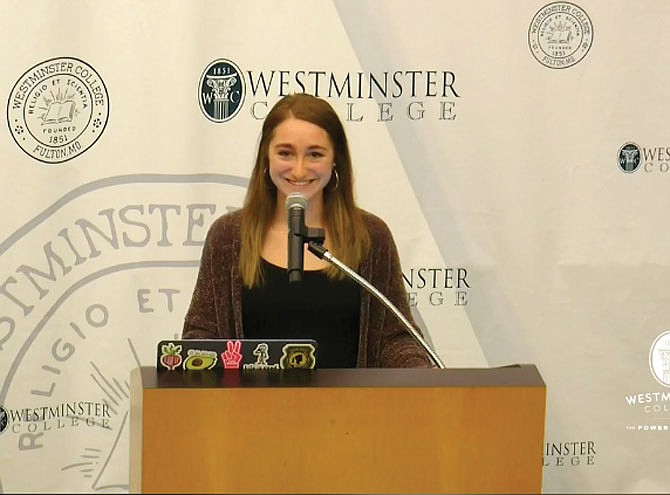Shady the triceratops continues to provide educational opportunities for the Westminster College community, as well as those outside the school.
Westminster geology and environmental science professor David Schmidt and student Colette Faiella held a virtual presentation Thursday on the excavation of the 3,000-pound triceratops skull that was brought to Fulton this summer.
Schmidt led a team that included Faiella; fellow Westminster students Sophia Hessenkemper and Timothy Burridge; Westminster graduates Meredith Bolen, Heather Martin and Mariah O'Brien; and Garrett Williamson, who was a student of Schmidt's when he taught at Wayland Baptist University. Also along for the ride were trip dogs Tiger, Carly and Tina.
"This summer was a once in a lifetime opportunity that involved the excavation of a dinosaur we call Shady," Schmidt said. "Shady is a triceratops that consists of well-preserved fossilized parts of the skeleton including a very large skull."
Faiella led the presentation, telling the story of the two-month camping trip the students volunteered to join. The fossils were found at the Grand River National Grassland in South Dakota.
"We were not the first to discover something amazing in the Badlands of South Dakota," Faiella said. "This area has been prospected for decades and has yielded several dinosaur fossils."
Faiella explained how the bones were dug up and plastered.
"Shady is a triceratops prorsus, a ceratopsian dinosaur from the late Cretaceous era," Faiella said. "They were giant herbivores that weighed about 12,000 pounds and were 30 feet in length."
The fossils will provide opportunities for students - not only is there another excavation trip scheduled for next summer, students will have the chance to study Shady back on campus.
"We gain research and being able to have hands-on experience with these bones," Faiella said. "I am currently working on a research project that entails making a bone map to scale of the site."
With more bones still at the site, the team was able to bring back 23 and two fossilized turtles. In addition to the skull, the fossils include vertebra, ilium, rib, frill, caudal, phalange, radius, jaw, gastralia, scapula and coracoid bones.
Faiella also shared statements from team members unable to attend the virtual presentation.
Burridge encouraged students to participate in opportunities like the excavation trip.
"Shady, to me, means the chance to continue spreading the education of the past for many, many years to come," Bolen said in a statement read by Faiella.

